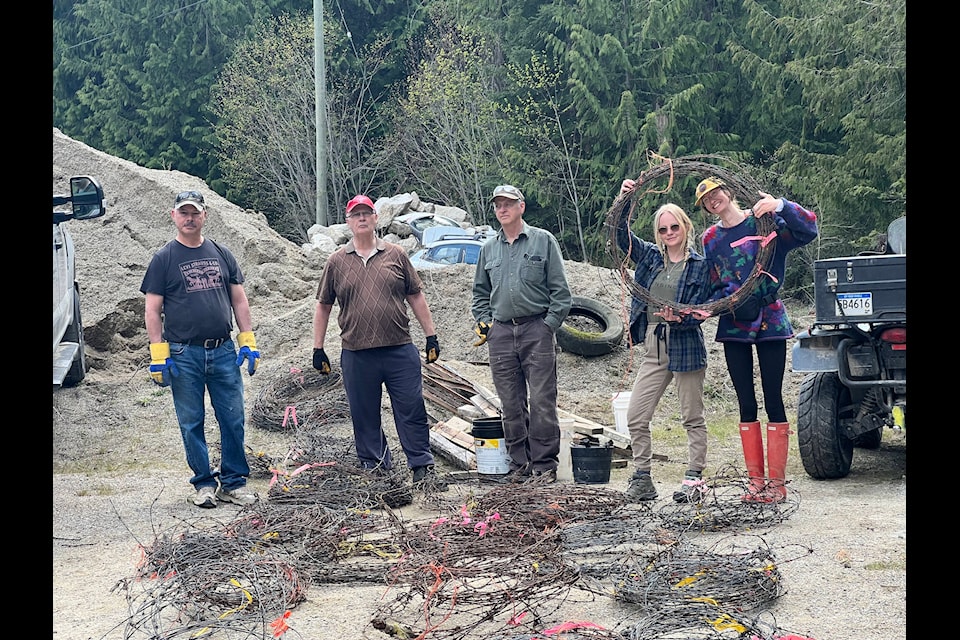Submitted by Wildsight - Creston Valley
Some organizations within the Creston Valley are becoming increasingly concerned about abandoned fences that can cause unnecessary hazards for wildlife. These organizations, through their membership, are now taking action to remedy the situation.
Wildsight, Rod and Gun Club, Trails for Creston Valley, and Friends of the Kootenay Lake came together to remove abandoned barbed wire fencing along Highway 3A between Duck Lake and Kootenay Lake on both sides of Boulder Creek on April 24. The Work Bee was well attended, with participants collecting heaps of wire found along the highway within the Creston Valley Wildlife Management Area.
Debby Johnson of Wildsight reported that some work bee participants ended their work when the fence veered off into the marsh.
This section of the fence, she said, will require a different removal strategy. However, most of the fence was decommissioned. Johnson said participants felt good knowing they helped out.
Brian Huscroft, president of the Rod and Gun Club, said their members are now noticing throughout the Creston Valley abandoned fences that could be removed. Huscroft expects more Work Bees, such as at the south end of Kootenay Lake. Huscroft wants the public to know that if anyone has old wire fencing that needs removal but the owners can’t do it themselves due to physical issues and can’t afford to hire out, let him know through the Rod and Gun Club. Huscroft will assess the job and plan a Work Bee to remove the fence with the help of Rod and Gun Club partners.
Johnson said Wildlife Friendly Fencing is attainable through awareness of better fencing methods. Some fences are not a problem for wildlife. However, many are. For example, issues exist with too high barriers for animals to jump over safely. Some wire fences are difficult to see when animals are running or in flight. Some have loose or broken wires that entangle animals. Meshed or too low fences can trap fawns. In addition, there are types of fences that impale or snag leaping animals. Finally, exclusion fences can create barriers to water and food.
Some proven remedies include walking your property, noticing wildlife trails and habitats, and planning a fence around wildlife needs. For instance, install yard fences less than four feet high. Leave wildlife corridors and habitats open on your property. Make the top of your fence visible for leaping animals and flag wire for birds. Deter predators with electric fences in places most needed. Only use exclusion fencing if needed but leave corridors open. Locate gates in corners of exclusion fences to help trapped animals to escape. Decommission fences when not being used. Use signage instead of a fence to keep the public out or fence only the compound area.
Online resources provide helpful instructions and make practical suggestions, such as Wildlife Friendly Fencing Guidebooks developed by other provinces and states. Johnson says she is becoming more aware of how property owners can work with nature instead of against it. She has opened a corridor in her yard and has marked the top wire of her fence. She acknowledges that wildlife-friendly fencing is attainable when we are open to a new perspective on an old issue.
READ MORE: Local, regional ecosystem restoration projects set to take place over next five years
READ MORE: Creston volunteers band together to create safer conditions for nesting turtles
